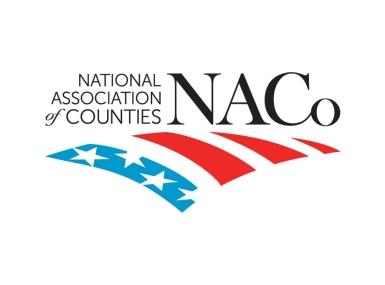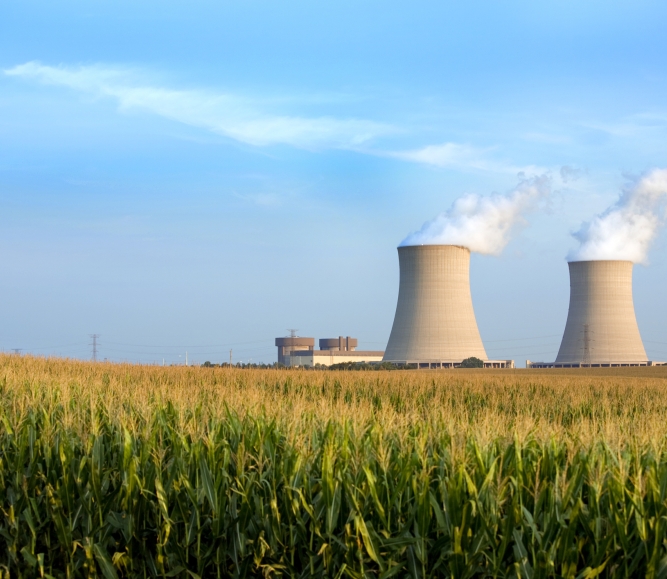Eastern Tennessee counties collaborate on nuclear energy ambitions
Key Takeaways
It’s been nearly 43 years since Knoxville played host to the World’s Fair, something newcomers to the city might only know about because the Sunsphere, built for the fair, remains such a prominent part of the city’s skyline. But although that monument might not be visible throughout all of Eastern Tennessee — the mountains don’t help — the light of energy innovation is shining throughout Roane and Anderson counties.
The region played a large role in developing nuclear technology 80 years ago, during the Manhattan Project, refining uranium during World War II. The region is still reaping the benefits of investment by the U.S. government and has put its own resources into supporting a resurgent energy industry that is growing to meet new national demands.
Learn more
“We are going to be the nuclear capital of the United States,” said Ron Berry, a Roane County commissioner who serves as NACo’s South Region representative.
“Knox County, Anderson County and Roane County, we’re all on the same page,” he said.
With a population center in Knox County, a project site in Roane County and the Department of Energy’s famed Oak Ridge National Laboratory in Roane and Anderson counties, the region’s counties cooperate to support, attract and train personnel to make their nuclear dreams possible.
“We are all going to benefit, because there’s no way that Roane County can supply the number of workers for all that’s going on, so we depend on Knox County and Anderson County and some other counties to help with that,” Berry said. “It’s a great coalition of people working together to make things happen.”
New nuclear
In a clearing in Roane County, the Tennessee Valley Authority is working to build small modular reactors that could not only dramatically cut the footprint needed to play host to a nuclear power station, but also prove a concept that could make it easier to site small modular nuclear reactors in more difficult places, where custom-built plants are not practical.
The TVA has applied for an $800 million grant from the U.S. Department of Energy's Generation III+ Small Modular Reactor Program. The authority had already invested $350 million in the project to reach this point. That grant, a TVA official said, would allow the authority to work on this leading technology without forcing customers to bear the burden of higher rates.
The very identity of nuclear power is poised to change. The mammoth cooling towers that stick out from miles away? Soon, small modular reactors could fit on a football field. That clearing in Roane County has markings indicating where four such reactors will eventually sit – known as the TVA’s Clinch River Site. The electricity generated from a successful small modular nuclear program would eventually be sold to 153 different power companies that buy energy from TVA, a federal agency.
Two specific trends are driving the energy urgency — the retirement of coal-fired power plants and increased demands driven by data center proliferation and artificial intelligence.
In March, U.S. Energy Secretary Chris Wright visited the Oak Ridge National Laboratory and underscored the stakes, calling for a “Manhattan Project 2.0.”
“We’re at a critical time again, right now, where another technology of simply immense import is hitting critical mass and is going to change our world in the next several years,” Wright said during his visit.
It’s been a quick transition for virtually everyone.
“A year ago, AI and nuclear weren’t in the same discussion,” said Roane County Mayor Wade Creswell. “Now they are absolutely in the same conversation.
“What that means locally is an unimaginable scaling and scope of work done in a period of time that just doesn’t compute mentally with where we are now. And if [Wright is] using that level of urgency, we’re trying to figure that out at a local level.”
Creswell has responded to that challenge by working regionally with Anderson County Mayor Terry Frank.
“Mayor Frank and I are bringing a group together to try to strategize what that means — from workforce development, housing, infrastructure — at the local level, to support the boldness and urgency to keep up an AI.”
These developments drew the interests of NACo President James Gore, a Sonoma County, Calif. supervisor, who toured the Clinch River Site and Oak Ridge National Laboratory in April.
“You can see where the future is going with this,” Gore said “To fuel the AI revolution, you have to dramatically increase our energy capacity. People don’t realize that our generation’s version of the space race is already going on.”
Small modular reactors can produce roughly a third of the energy output of a traditional nuclear power plant but can be manufactured offsite.
Bob Deacy, senior vice president of TVA’s Clinch River Nuclear Site, noted that success at Clinch River will make nuclear power dramatically less expensive.
“When we complete the design, we'll have one standard design that can be deployed in Europe and Canada and the United States,” he said. “It’s all the same reactive vessel, they’re all the same pump, valves and motors. It eliminates the supply chain problem. We’ll own a design, and have the rights to that design, so if we build 20 more of these plants, we don’t have to go out and pay for that design 20 more times. It’s a big savings.”
By the time the technology is proven, Creswell said many data centers will likely have their own small modular reactors on-site to provide power.
Training the workforce
Though Knox County is home to the University of Tennessee, Roane State Community College is taking a more direct, active role in training the workforce needed to support further nuclear development.
The radiation technicians and welders are going to mostly come through the college’s 15-credit hour program, developed in consultation with players in the local energy industry.
Teresa Duncan, vice president of workforce development at Roane State boasted about the roster of adjunct professors who work at Oak Ridge National Laboratory as a major selling point.
“These are not just academicians who came right out of college and went into teaching, they are all people who have been working in the field for years,” Duncan said. “We think there is power in that.”
The school’s Oak Ridge campus also includes a nuclear engineering technology lab, for hands-on instruction.
Creswell said the school was crucial to workforce development.
“We don’t win Orano without Roane State doing what they’re doing,” he said, referring to a company building a uranium enrichment facility on the Oak Ridge Reservation — a facility separate from the national laboratory built on a Superfund site.
The prep work has been paying off, even before Wright brought a spotlight to Eastern Tennessee, drawing private companies like Orano, Kairos Power and Type I Fusion, some of which make use of the national laboratory’s supercomputer, another big draw for the region.
“The U.S. is the only place this type of technology can be commercialized,” said David Kelly, senior director of program management for Type 1 Fusion. “What struck us was the integrated strategy between the different layers of government, lots of different organizations that were all pulling in the same direction.”
Community comfort
In addition to a head start in infrastructure, Eastern Tennessee also has an advantage in the minds of its residents. In a world where Three Mile Island and Chernobyl need little introduction, nuclear energy could be hard to sell to a community. Gore noted that Sebastopol, in Sonoma County, declared itself a nuclear-free zone in 1984, two years before the Chernobyl disaster.
But the Tennesseans see only comfort, built on a long track record of safety.
“Most folks probably don't use the word ‘nuclear’ once a month,” Berry said. “It’s just a way of life. We’ve traded fear for jobs.”
But Creswell understands the trepidation.
“If you’re not familiar with it as a community, it’s going to be ‘Not in my backyard’ every single time. We’re familiar with it here, because it’s been around for 82 years. It’s what we do,” he said, noting that many residents’ parents and grandparents worked at Oak Ridge on the Manhattan Project. “We truly believe that we are the most nuclear-friendly community in the United States of America.”
He noted that he’d seen non-nuclear projects in Roane County shouted down in public hearings, while some, like Orano, the nuclear fuel production project, hear nary a peep. That reflects residents’ comfort level, a result of the region’s track record.
“You’re seeing states like Wyoming and Texas and really all across the country, pop up and say ‘We want nuclear everywhere.’ And they do, at an official level, but their communities aren’t ready for it. They’re not as familiar.
“It can’t be overstated in the fact that the nuclear renaissance almost has to happen in Oak Ridge for that reason, plus the existing workforce that has been here for 82 years to support that.”
Related News

U.S. Department of Agriculture unveils $700 million for regenerative agriculture
On December 10, U.S. Secretary of Agriculture Brooke Rollins announced the launch of a $700 million pilot program to support regenerative agriculture practices across the country.

County Countdown – Dec. 1, 2025
Every other week, NACo's County Countdown reviews top federal policy advocacy items with an eye towards counties and the intergovernmental partnership.

Counties Celebrate Key Permitting Inclusions in SPEED Act
NACo issued the following statement in response to the passage of the Standardizing Permitting and Expediting Economic Development (SPEED) Act (H.R. 4776), which advanced out of the U.S. House Committee on Natural Resources on November 20.
Advocacy
White House signs executive orders to advance nuclear power
On May 23, President Trump signed four executive orders focused on expanding the nuclear energy industry. The executive orders aim to position nuclear power as a key contributor to energy reliability, economic growth and national security — especially as artificial intelligence, advanced manufacturing and military operations increase demand for stable, high-density power sources.

